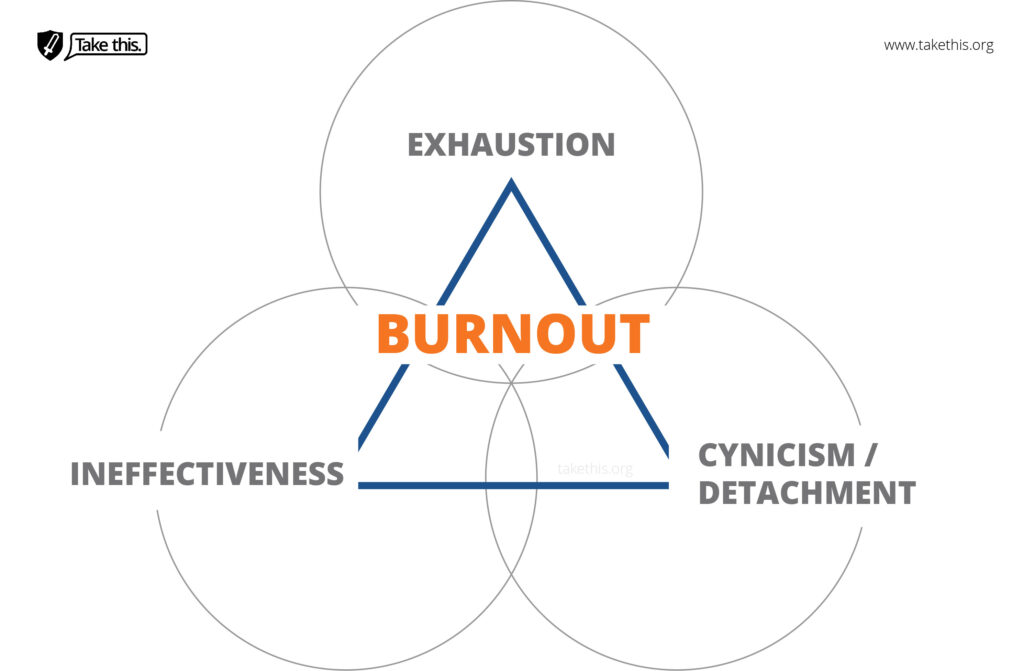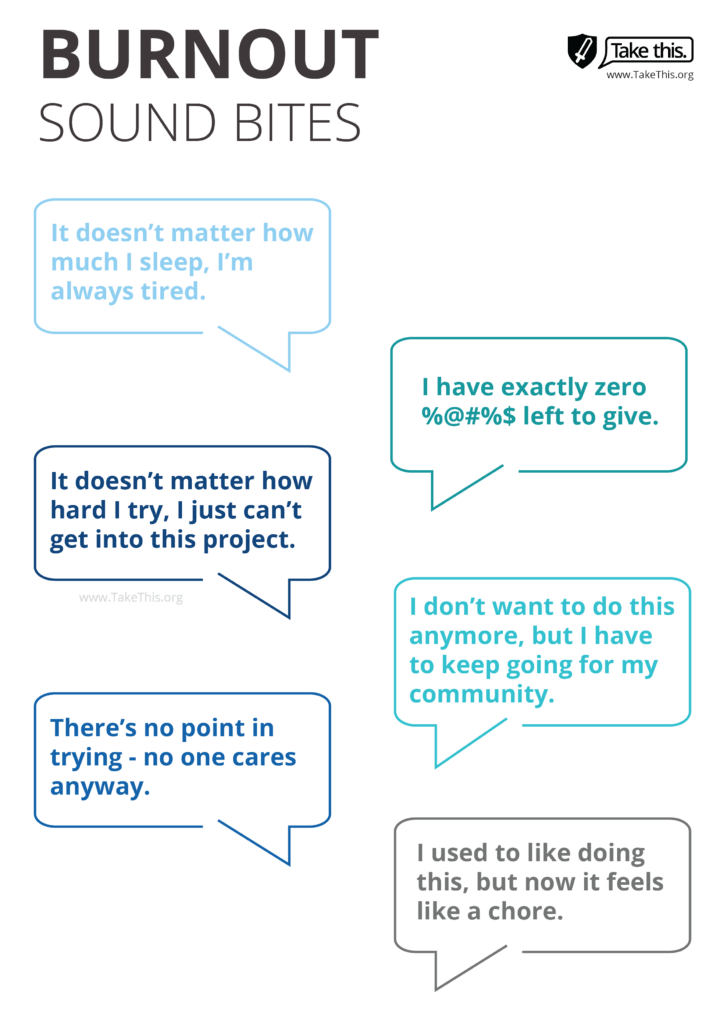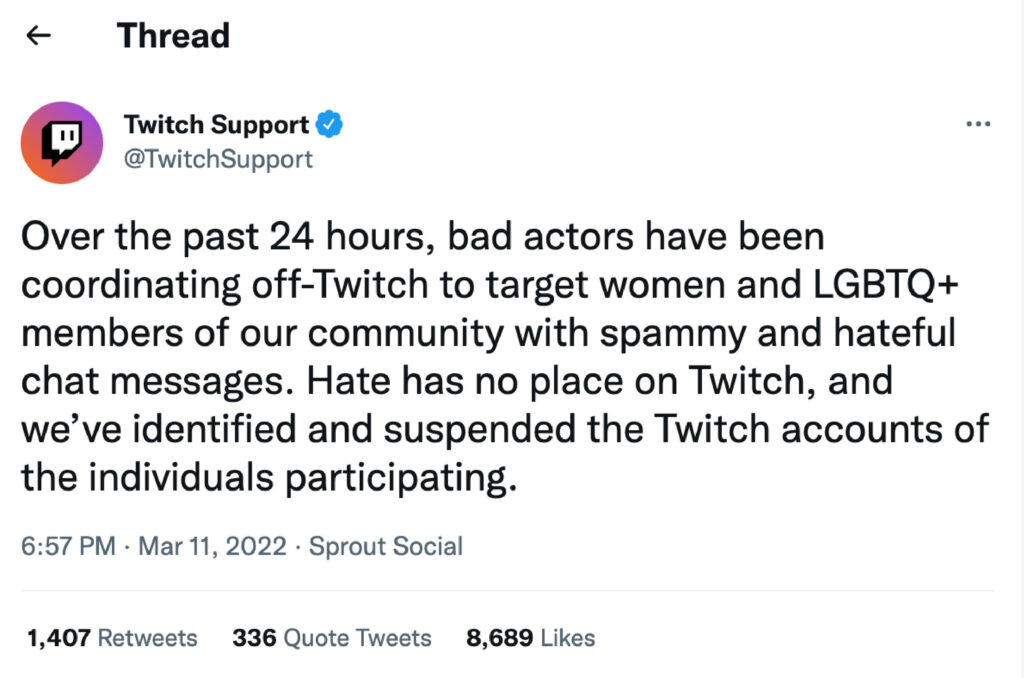Burnout Home | Burnout 101 | Burnout Factors | Content Creator Burnout
Content Creator Burnout
Anyone can burnout, and content creators are no exception. This page covers some of the unique challenges that content creators face in their day-to-day work and how these challenges put content creators at risk for burnout.
Authors: Kelli N. Dunlap, PsyD & Raffael Boccamazzo, PsyD
Creating content is work!
As discussed in Burnout 101, burnout is a collection of symptoms that can have a big impact on our ability to function at work and at home. Whether you’re creating content for fun or professionally, content creation is work. By extension, content-hosting platforms like Twitch and YouTube and community spaces like Discord are work spaces. For content creators, the symptoms of burnout show up in their content, their communities, and their personal lives.
Content Creator Burnout Looks Like…
In Burnout 101, we looked at the three core features of occupational burnout. In this section, we dig into what exhaustion, ineffectiveness, and cynicism / detachment look like in content creators and how they show up in content creation workspaces.
EXHAUSTION
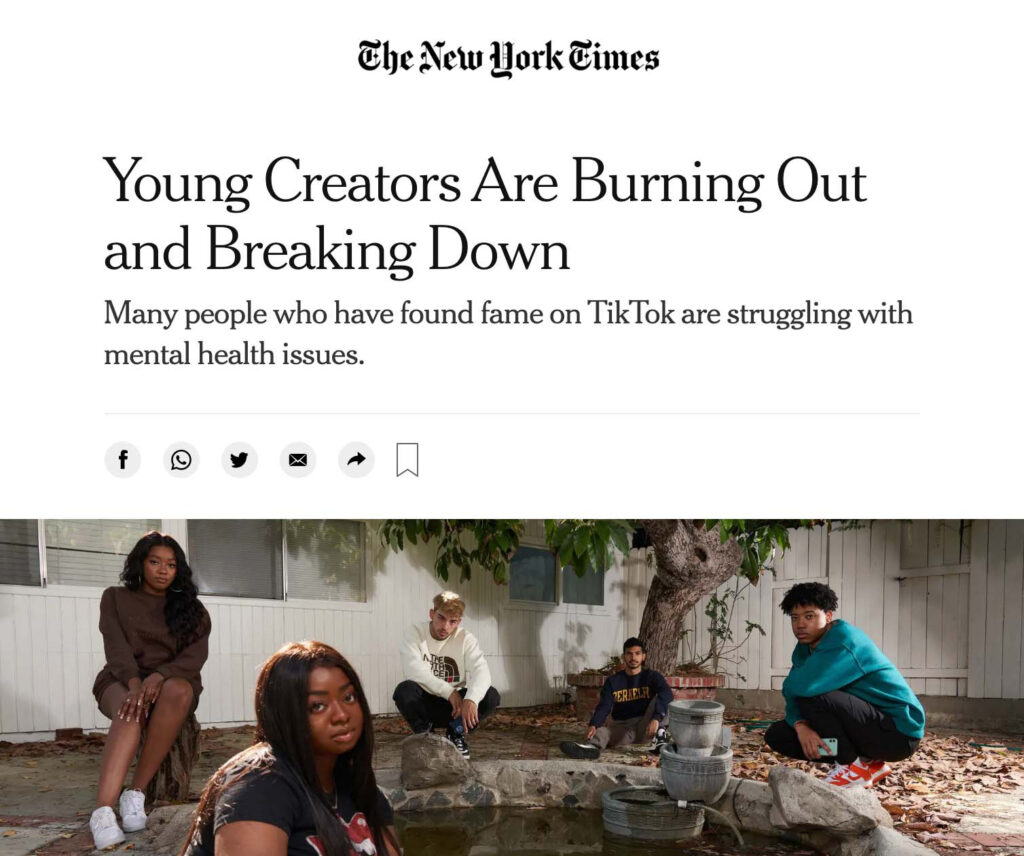
- Consistently less visible energy on-camera or more effort needed to seem energetic
- Difficulty starting or finishing content-related tasks.
- Changes in sleep patterns, whether that’s sleeping too much, too little, or difficulties falling asleep.
- Frequently feeling sluggish or tired outside of content creation work, especially during activities you’d typically enjoy.
INEFFECTIVENESS
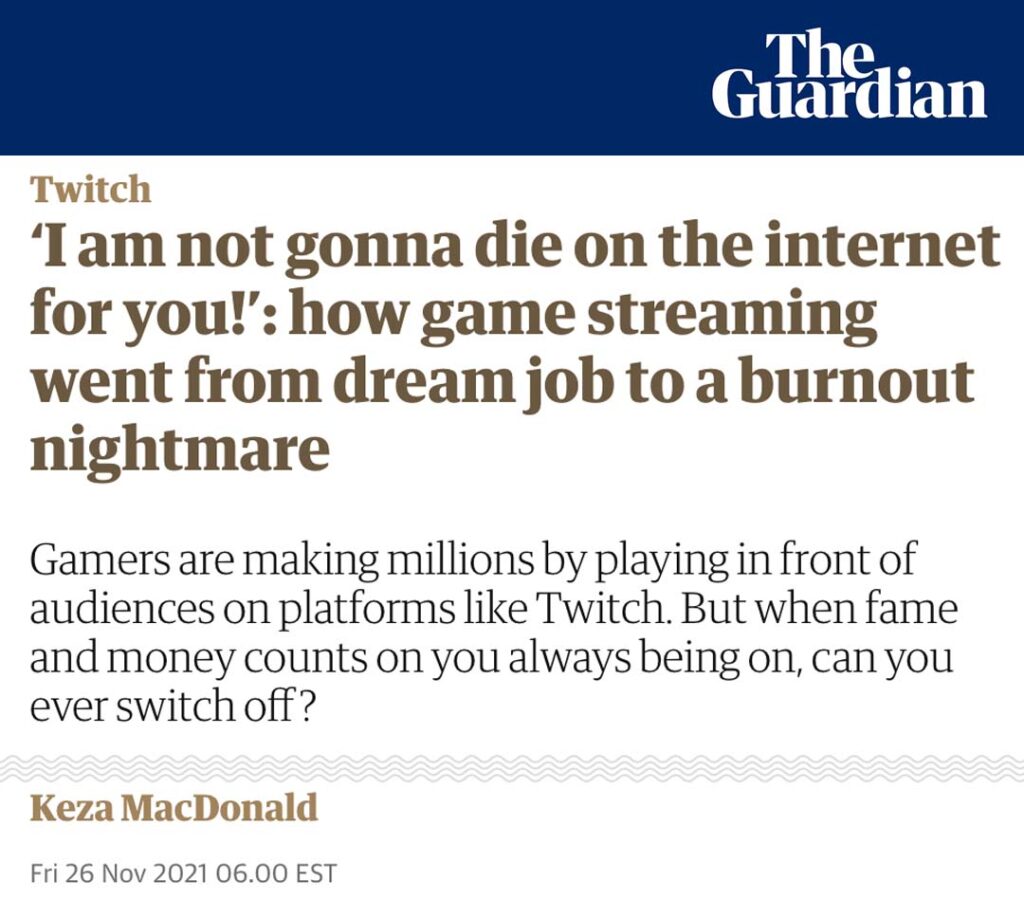
- Making a lot mistakes you might not typically make, especially with routine tasks, like remembering to post to social media
- Missing deadlines or emails
- Not following through on commitments
- More technical or production errors than usual
- Not starting your stream on time
CYNICISM / DETACHMENT
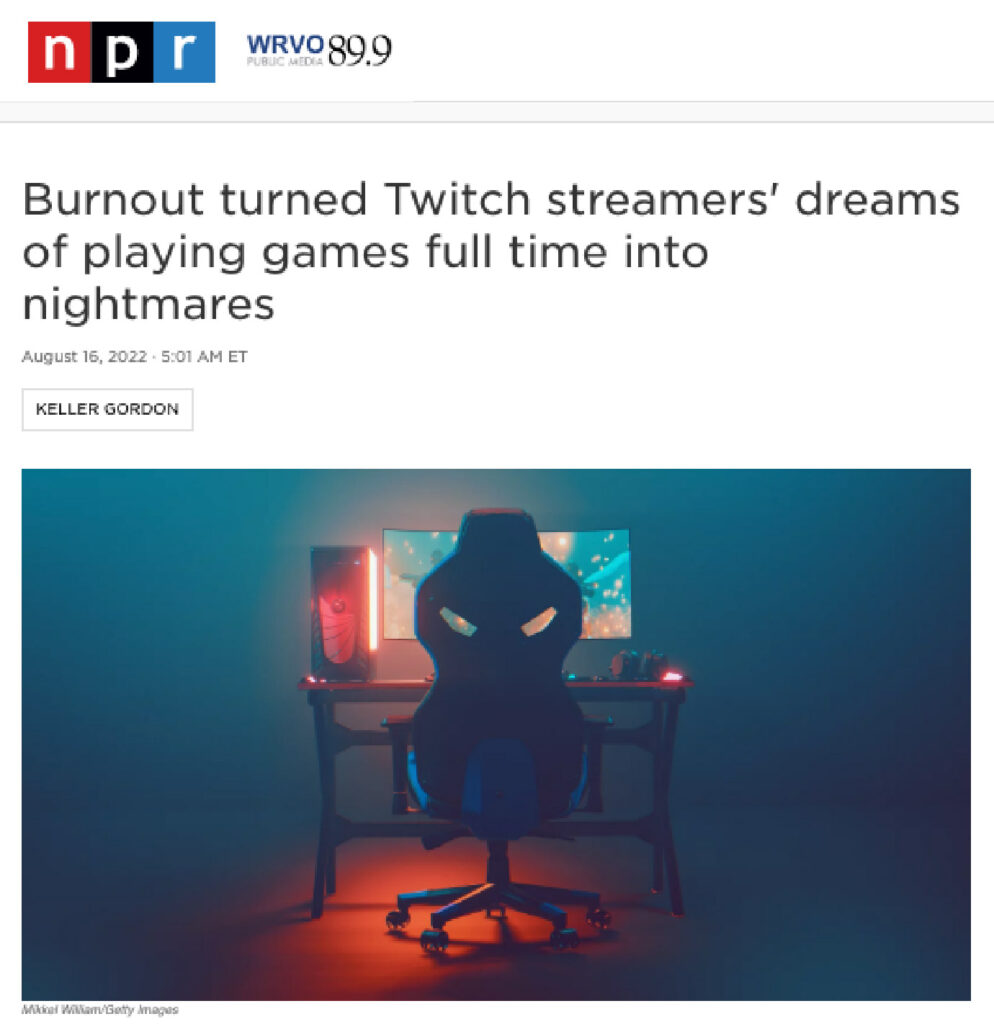
- Not caring as much — or at all — about your content work, including subscribers, fans, or mods
- Lacking enthusiasm for work that used to bring you joy or fulfillment
- Irritation or anger at your team, your community, or even the people in your personal life
- Expecting things to go wrong all the time. Not just routine technical stuff, but bigger stuff like career growth, sponsorships, sub numbers, or visibility
- Thinking things are never going to get better
How Content Creator Burnout Happens
No one plans to burn out. It’s an insidious creep that starts off with the best of intentions. Just one more stream. Just one more tweet. Just one more…
There are no scientifically agreed upon “stages” or specific sequence that leads to burnout. The snapshots above and the descriptions below highlight different ways that burnout can show up and the different impacts it can have. While some symptoms are mild and others are more intense, having one does not necessarily lead to the next.
1. Working for the Weekend
The beginnings of burnout can start with mild dissatisfaction of how work-related things are going. It can include subtle feelings of irritation or annoyance as well as self-talk around “just sucking it up” and “making it to the weekend” after which everything will be fine. We all have these kinds of feelings and thoughts from time to time, but the difference with the early stages of burnout is that the stress doesn’t resolve – that weekend break, if it comes at all, isn’t actually a reprieve.
2. The ‘Push Through’
Next, the low-level irritation becomes more noticeable and starts to show up in your work and your relationships. You might feel annoyed at your stream team, frustrated with your community, or snappish with your significant other. Things start to fall through the cracks, but you’re still convinced in your ability to “push through” or that “it’s just a bad week.”
3. Trapped on a Sinking Ship
Those upsetting thoughts and feelings are front and center and completing even minor tasks feels like a major lift. Physical issues, like fatigue or problems sleeping become problematic and it can feel like you’re sinking. But, because you’re a content creator and have a community that you care for or fans and supporters you feel beholden to, it’s hard to walk away.
4. All Downhill and Falling Faster
Everything is beyond exhausted – mind, body, and spirit. You’re bone-weary. Anxious and depressive thoughts are omnipresent and your physical well-being is degrading.
5. Feel the Burn
At this point, something has to give. This is where mental and physical breakdowns caused by chronic, unrelenting stress happen. You have nothing left to give. You are burned out.
Vulnerabilities to Content Creator Burnout
Some content creators are more susceptible to burnout. Remember, burnout happens when there’s a poor fit between a work system and the person working in that system. Many content creators, especially members of marginalized groups, are creating within systems which, at best, weren’t designed with them in mind and, at worst, designed explicitly to exclude them or cause harm. There is significantly more work that marginalized creators must put into their spaces to make these spaces inhabitable.
Putting systems in place to block hate raids and hateful speech, managing bad-faith or intentionally inflammatory comments in chat, and reading death threats in DMs are just a few of the extra stressors weighing on these creators. And even with all the extra work, security mechanisms, and emotional labor, neither recognition nor safety is guaranteed.
But wait…. there’s more
While the focus of this section has been on burnout as a work-related issue, it is important to highlight that it ultimately is a systemic issue. Where there is person-system incompatibility, there is the potential for burnout.
Burnout in Diverse and Neurodivergent Creators
Unlike work-related burnout, other forms of burnout are bound to culture and social norms, making them even more challenging to address and to combat. You can quit a job, but you can’t quit your ADHD or Autism. You can’t quit your race or socio-economic class. Digging into the variety of ways burnout manifests outside of the workplace and across cultures and is at least a college course worth of content (an entire degree, tbqh). With the understanding that these topics are worthy of study in their own right and that the below information is just scratching the surface, here are some resources about different mental, cultural, and racial considerations on burnout.
ADHD and Burnout
Attention Deficit / Hyperactivity Disorder (ADHD) is a neurodevelopmental diagnosis which means the brain develops and functions differently than most other people. There’s a common misconception that people with ADHD lack attention. The truth is, however, ADHD is really about difficulties regulating attention as well as their emotions. That is, controlling what to pay attention to and for how long can really hard from someone with ADHD. This can look like difficulty concentrating, focusing, or prioritizing tasks. It can also include things like procrastination, forgetfulness, lacking motivation or disorganization. (The fancy clinical jargon for these skills is ‘executive functioning’). Some presentations of ADHD also include ‘hyperactivity’ which can show up as fidgeting or being unable to sit still, but can also include restlessness, risk-taking, or racing thoughts.
Content creation is a field where you need to be juggling 100 balls in the air all at once. This can be really attractive to ADHD brains because they often thrive in spaces that are creative, novel, and need out-of-box thinking.
“We’re cognitive McGuyvers.”
Dr. Sarah Hays, PsyD, clinical contributor at Take This
However, it’s also a field where schedules, deadlines, task prioritization, planning, consistency, and organization – all those executive functioning tasks – are critical, and opportunities for distraction are everywhere.
A major vulnerability to occupational burnout for those with ADHD is Workload. Workload is the amount of work you need to do and your individual ability to do it sustainably. Because people with ADHD are prone to saying “YES!” to lots of projects – sometimes out of a sense of novelty and excitement and sometimes due to the pressure of people-pleasing or guilt – their plates frequently overfloweth with to-dos, deadlines, and commitments.
“Difficulties with time management can lead us to take on way too many projects and put way more on our plate than can actually fit there and potentially lead to burnout.”
Jessica McCabe, How to ADHD
The pressure of being overwhelmed with work can lead to mistakes, which can spiral into destructive thinking (e.g. I’m lazy; I just need to work harder; I must suck because everyone else can do this and I can’t), and increasing anxiety. Which leads to more mistakes. Which leads to destructive thinking and anxiety. And so on until you just NOPE out of whatever it is. Or, as we say in the clinical world, engage in avoidance behaviors. Ignore those emails. Dodge that phone call. Neglect those deadlines.
And all of this loops back and reinforces burnout thoughts and behaviors.
As mentioned above, this is just an overview of what there is to know about ADHD and burnout. If you want a deeper dive, into ADHD, the relationship between occupation burnout and ADHD, and tips, strategies, and shared ADHD experiences, here are a few expert resources to check out:
ADHD Comics [Website]
How to ADHD [Website]
Black Girl, Lost Keys [Website]
Autism and Burnout
Autism is a neurodevelopmental diagnosis which means autistic individuals think, feel, and communicate differently than most of the people around them. Every Autistic person is unique in how they experience and express their Autism, however some common traits or behaviors include information dumping, being overly pedantic or precise, having an obsessive focus on a few different things, or not responding social cues the way most people expect.
It’s like being an Android phone when everyone else is an iPhone, but they expect you to act like an iPhone.
Dr. Raffael Boccamazzo, PsyD, Clinical director at Take This
Content creation often requires routines and scripts, from the ritual of a tech check before a Twitch stream, to scripting out scenes and beats in a YouTube video. Autistic individuals thrive in spaces where there are these kinds of structures in place. As every content creator knows, however, something will always go wrong or deviate from the intended path, and the need to adapt on the fly can be difficult and even overwhelming. Similarly, a lot of the work of being a content creator is set switching (sometimes called multitasking). As the number of tasks increase and the number of times switching between tasks increases, it becomes harder and harder for some Autistic creators to keep up, especially when it’s not in their routine. Similar to ADHD creators, Autistic creators can find themselves with too much on their plates (workload) and become so overwhelmed that they shut down.
Another major vulnerability is the frequent need to mask behaviors in order to be accepted. Social inclusivity in the workplace is an area where a lot of Autistic individuals struggle; feeling isolated or disconnected from your creator community is major contributor to occupational burnout.
To learn more about Autism, the relationship between occupation burnout and Autism, and tips, strategies, and shared Autistic experiences, please visit these fantastic Autism-focused resources:
The Awake Project [Website]
#ActuallyAutistic [Twitter]
Burnout and Race, Gender, and Sexual Orientation
Research on race, gender, and sexual identity and the development and impact of occupational burnout is mixed. Although there’s no clear guidance, there are three factors that seem to cut across how burnout develops and impacts people of different races, genders, and sexual orientations. Those risk factors are:
- When a person lacks a sense of connection or belonging in a workplace and amongst peers
- When a workplace’s values and practices are consistently in conflict with your own
- When rules, policies, and promotions are – or seem to be – distributed unfairly
Marginalized creators often face subtle and overt negative experiences on the job, many of which fall into one, two, or all three of the above risk factors. Feeling isolated or in competition with other creators, having to work within a system or platform that downplays your content, and having rewards allocated not because of merit but because of a mysterious algorithm are just a few examples of how this shows up in the creator space. While all creators may experience these things from time to time, marginalized creators are more likely to experience these negative experiences as a routine part of their workday. And when a workplace (in this case, a content creation platform) doesn’t prevent these experiences, it takes a ton of extra effort to just show up to work and exist in that space, let alone feel any sense of belonging, fairness, or meaning.
For example, hate raids are unfortunately common for those who use identity tags on Twitch, and gained a lot of attention in 2021. Streamers have also cited double standards in policy enforcement.
Despite a lack of clarity from academia, important conversations about these topics are ongoing. Below are some resources for examining burnout and the influence of and impact on race, gender, and sexual orientation.
Black Identity and Gaming Mental Health Panel
How to Grow and Navigate Twitch as a Streamer of Color
Thank you so much to all of the contributors and reviewers whose feedback and insight made this page possible:
BlushingCrafter
Dasbif
Goblinkatie
Haughty Chicken
Liz Favtastic
Rachel Kowert, PhD
Mxiety
EmotionalSupportUnicorn
Jebro
mugoi usagi
Jessica McCabe
Tanya DePass
KingArgaroth
Wordfangirl
Kaemsi
Micropixel
Sarah Hays, PsyD
Eve Crevoshay

